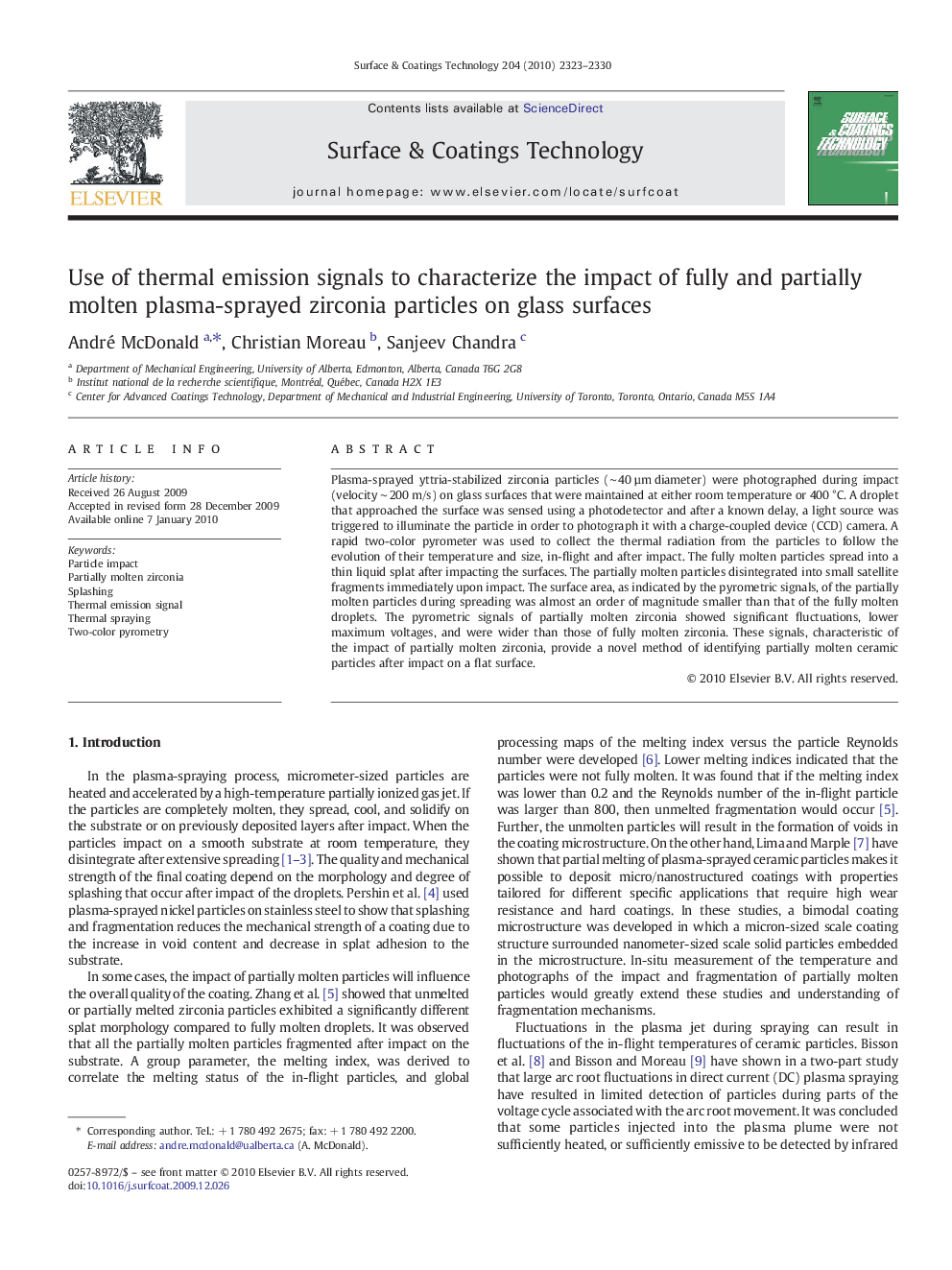| Article ID | Journal | Published Year | Pages | File Type |
|---|---|---|---|---|
| 1659494 | Surface and Coatings Technology | 2010 | 8 Pages |
Plasma-sprayed yttria-stabilized zirconia particles (∼ 40 µm diameter) were photographed during impact (velocity ∼ 200 m/s) on glass surfaces that were maintained at either room temperature or 400 °C. A droplet that approached the surface was sensed using a photodetector and after a known delay, a light source was triggered to illuminate the particle in order to photograph it with a charge-coupled device (CCD) camera. A rapid two-color pyrometer was used to collect the thermal radiation from the particles to follow the evolution of their temperature and size, in-flight and after impact. The fully molten particles spread into a thin liquid splat after impacting the surfaces. The partially molten particles disintegrated into small satellite fragments immediately upon impact. The surface area, as indicated by the pyrometric signals, of the partially molten particles during spreading was almost an order of magnitude smaller than that of the fully molten droplets. The pyrometric signals of partially molten zirconia showed significant fluctuations, lower maximum voltages, and were wider than those of fully molten zirconia. These signals, characteristic of the impact of partially molten zirconia, provide a novel method of identifying partially molten ceramic particles after impact on a flat surface.
